R&B, or Rhythm & Blues, is a rich tapestry of emotional resonance and musical innovation.
This genre carries a blend of soulful melodies, intricate rhythms, and heartfelt lyrics.
Understanding R&B’s core, especially its chord progressions, can significantly elevate your tracks and take them to a whole new level of captivating.
As well as get them to resonate deeply with listeners and have them coming back for more.
In today’s article, we’ll be breaking down:
- The fundamentals of R&B chord progressions ✓
- Key signatures ✓
- Major & minor chords & scales ✓
- Mixing R&B with hip-hop & jazz ✓
- Bass fundamentals in R&B ✓
- The top 10 R&B chord progressions ✓
- Unique roles of specific chords ✓
- Unconventional chord methods ✓
- Advanced tips, tricks, and technique to enhance your progressions ✓
Equipped with this newfound knowledge, you’ll be ready to create R&B chord progressions that will transform your tracks.
This way, you can create songs that truly shine and capture the attention (and hearts) of your listeners.
So, let’s dive in…
Table of Contents
- What Do R&B Chord Progressions Consist Of?
- The Role of Key Signatures in Chord Progressions
- What is the Difference between a Minor Chord and Major Chord?
- Digging Deep into R&B Chord Structures
- Borrowed Chords & Modal Interchange for Unique Progressions
- The Top 10 R&B Chord Progressions To Make Your Tracks Shine
- #1. The Classic ii-V-I (Dm7 – G7 – Cmaj7)
- #2. The 6-2-5-1 Progression (Am7 – Dm7 – G7 – Cmaj7)
- #3. Descending Progression (Emaj7 – D#m7 – G#m7 – F#m7)
- #4. Ascending Minor 7th Sequence (Dm7 – Em7 – Fm7 – Gm7)
- #5. The Neo-Soul IV (Fmaj7 – E7#9 – Am9 – Gm7 – C7)
- #6. Suspended Resolution (Dm7 – Dsus2 – G7 – Cmaj9)
- #7. Modern R&B 1-5-6-4 Progression (Cmaj7 – Gmaj7 – Am7 – Fmaj7)
- #8. Diminished Passing Chord (Cmaj7 – C#dim7 – Dm7 – G7)
- #9. Alternate Minor Progression (Am9 – Bm7b5 – E7#9 – Am9)
- #10. Phrygian Modal Flavor (E – Fmaj7 – Em7 – Dm7)
- Advanced Techniques & Tips For Intriguing Chord Progressions
- Bonus: Unconventional Chord Practices
- R&B Chord Progressions: Final Thoughts
What Do R&B Chord Progressions Consist Of?
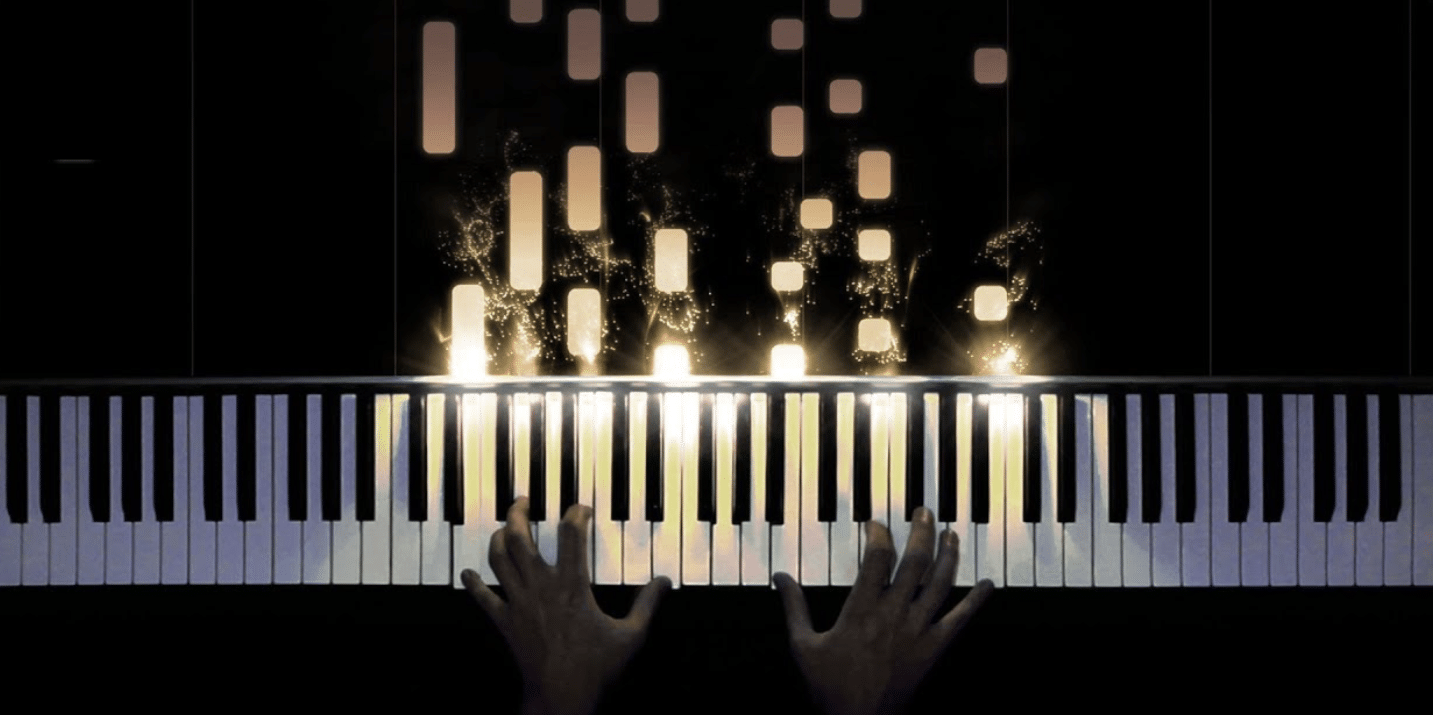
R&B, which stands for Rhythm and Blues, has been a defining genre in the music industry, often characterized by its:
- Emotive vocals
- Syncopated rhythms
- Rich chord progressions
At the heart of any R&B track lies its chord progression 一 the sequence of chords that create the melody and form the backbone of the song.
R&B chord progressions are often complex and emotionally charged.
They draw from a vast array of chords from major and minor to an extended chord and altered chord.
These chords (when played in a specific sequence) evoke the signature mood and soulful feel associated with the genre.
It’s not just about playing any sequence; it’s about understanding the interplay of tension and release, dissonance and harmony.
Another characteristic element is the use of “blue notes,” or notes that fall between the cracks of the traditional Western music scales.
These blue notes, when incorporated into chord progressions, give R&B its distinct, soulful edge, as it blends the boundaries of major and minor tonalities.
The Role of Key Signatures in Chord Progressions
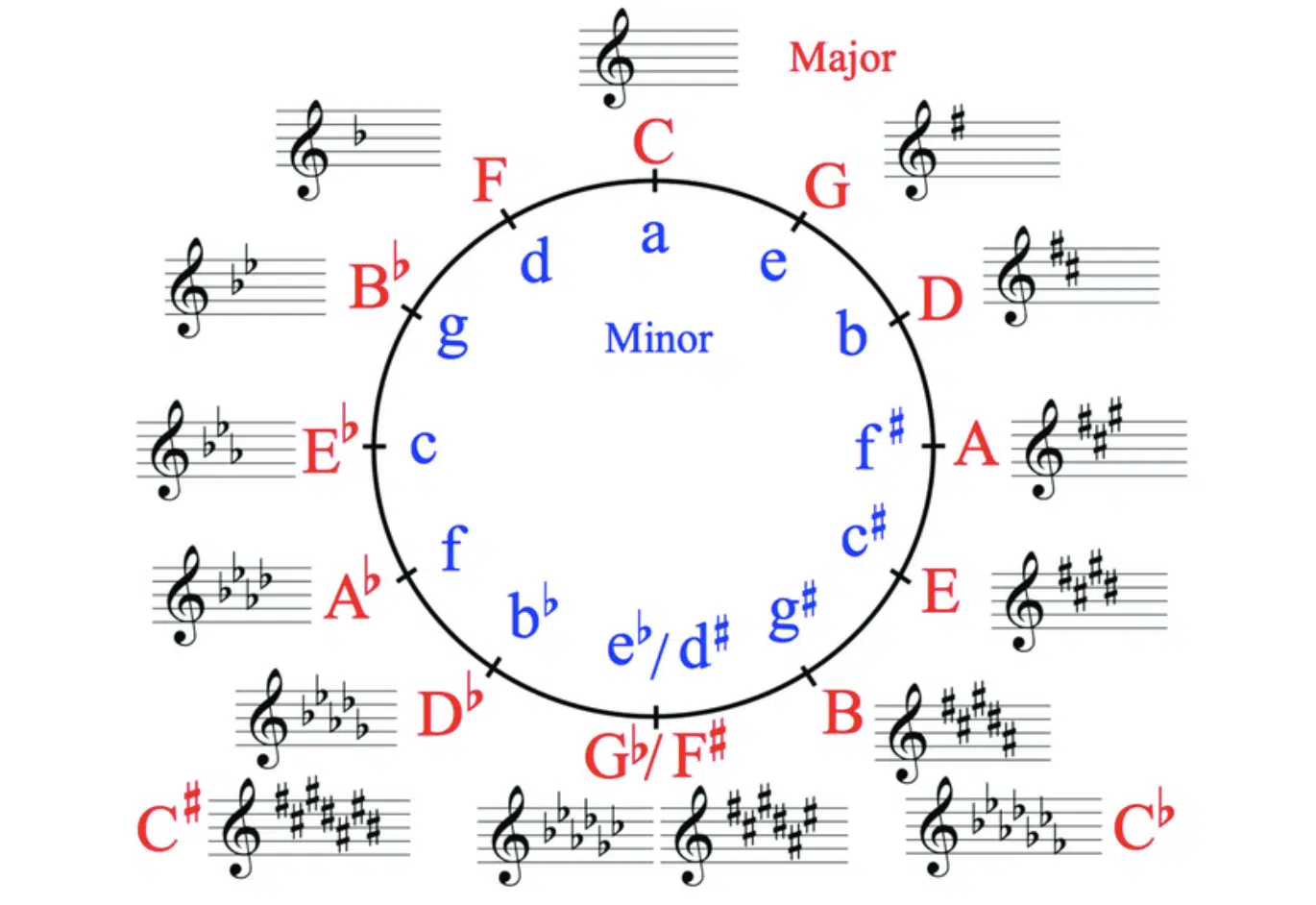
Key signatures serve as the foundational roadmap for any professional song, setting the tonal center and mood.
In R&B, the choice of key can significantly influence the song’s emotional resonance.
As a music producer, it’s very important to understand the importance of the major key and the minor key.
The Major key, with its bright and uplifting tonality, is often used in R&B to convey feelings of:
- Joy
- Love
- Optimism
Major chords have a certain warmth and positivity that can make a song feel open and expansive.
The Minor key, on the other hand, is filled with a more melancholic and introspective mood, perfect for expressing:
- Heartbreak
- Sorrow
- Deeper introspection
When R&B artists want to dive into deeper emotions or add a touch of drama, they often lean into the minor key.
Yet, the beauty of R&B lies in its ability to seamlessly merge these two worlds.
It’s not uncommon for a song to shift between major and minor tonalities, offering listeners a roller-coaster of emotional experiences.
The duality of these keys, and the ability to switch between them, allows for a variety of expression.
From the highs of love’s first bloom to the lows of a painful breakup, it can cover it all, all with the same key.
What is the Difference between a Minor Chord and Major Chord?
At the heart of music theory lies the distinction between minor and major chords.
These chords provide the emotional backdrop for much of the music we hear, each carrying its own unique emotional weight and color.
They are the building blocks for songs across multiple genres, but understanding their distinct qualities and characteristics is crucial for anyone delving into songwriting or music production.
-
A Major Chord
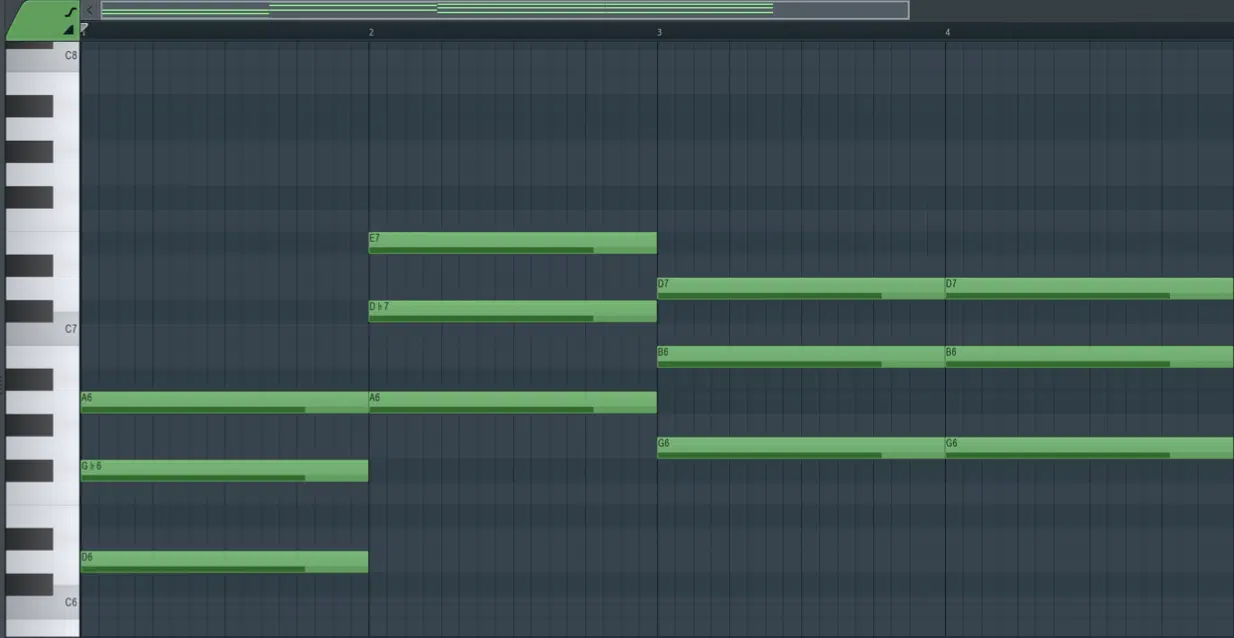
Major chords resonate with feelings of happiness, brightness, and positivity.
The basic major chord consists of the root note, the major third, and the perfect fifth.
For instance, consider the C major chord. It’s composed of the notes:
- C (root note)
- E (major third)
- G (perfect fifth)
When played, it exudes a sense of cheerfulness and resolution.
In the realm of R&B and many other genres, major chords often form the backbone of uplifting sections of songs or tracks with an overall optimistic tone.
If you’d like to know all about major chords or major chord progressions, we’ve got you covered.
-
A Minor Chord
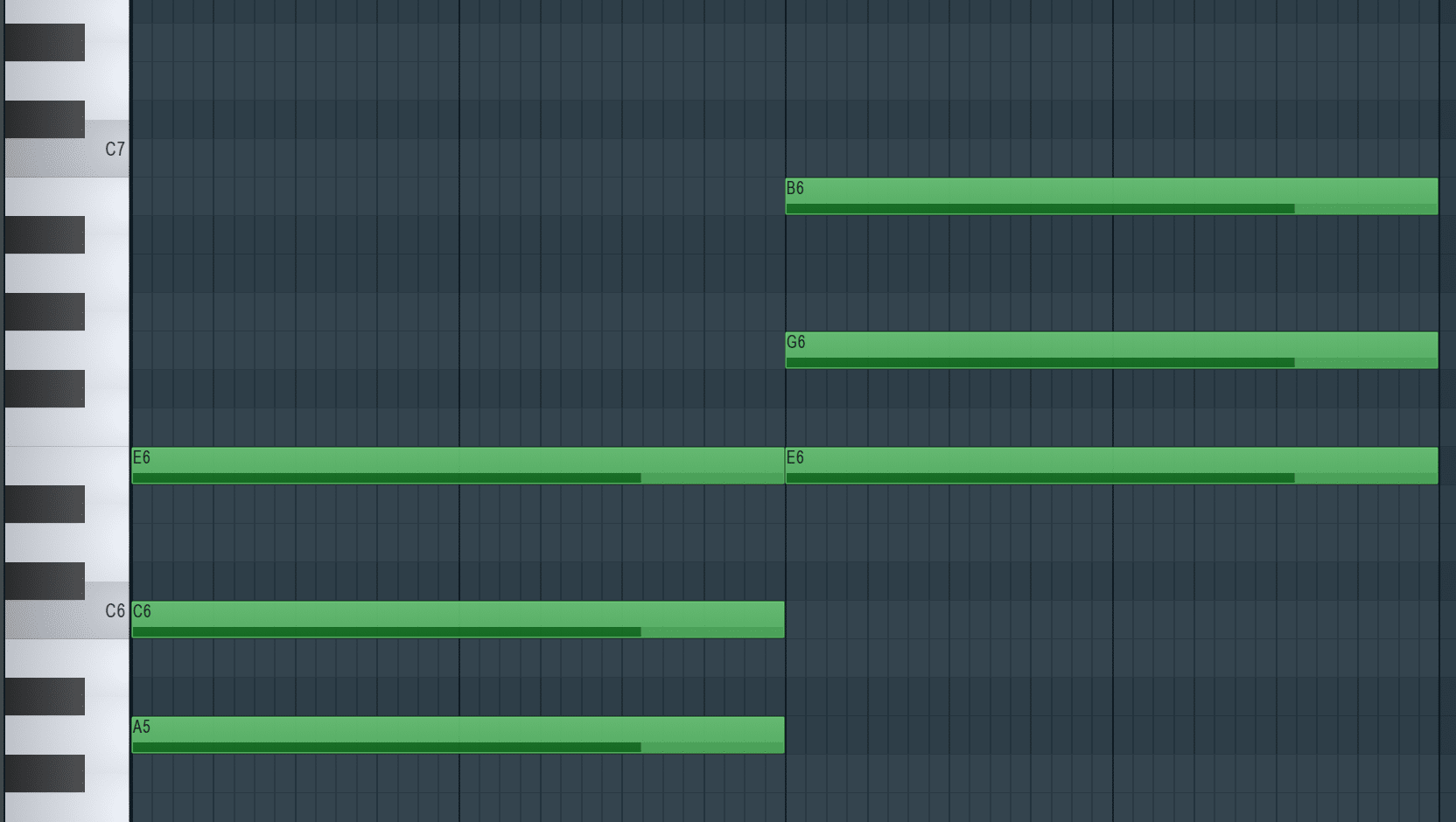
Minor chords bring forth feelings of melancholy, sadness, or introspection.
They are built using the root note, minor third, and perfect fifth. Taking the example of the A minor chord, it’s made up of the notes:
- A (root)
- C (minor third)
- E (perfect fifth)
This chord, when struck, emits a more somber or contemplative vibe.
In R&B, minor chords can be used to bring depth, introspection, and a touch of sorrow to a track, making it resonate deeply with listeners.
If you’d like to know all about minor chords or minor chord progressions, we’ve got you covered on that end too.
Digging Deep into R&B Chord Structures
In R&B, it’s not just the chords you play but how you play them that matters.
So, let’s delve into the intricacies that give R&B its distinctive and highly desirable sound.
-
Extended Chords: The Backbone of R&B’s Lush Sound
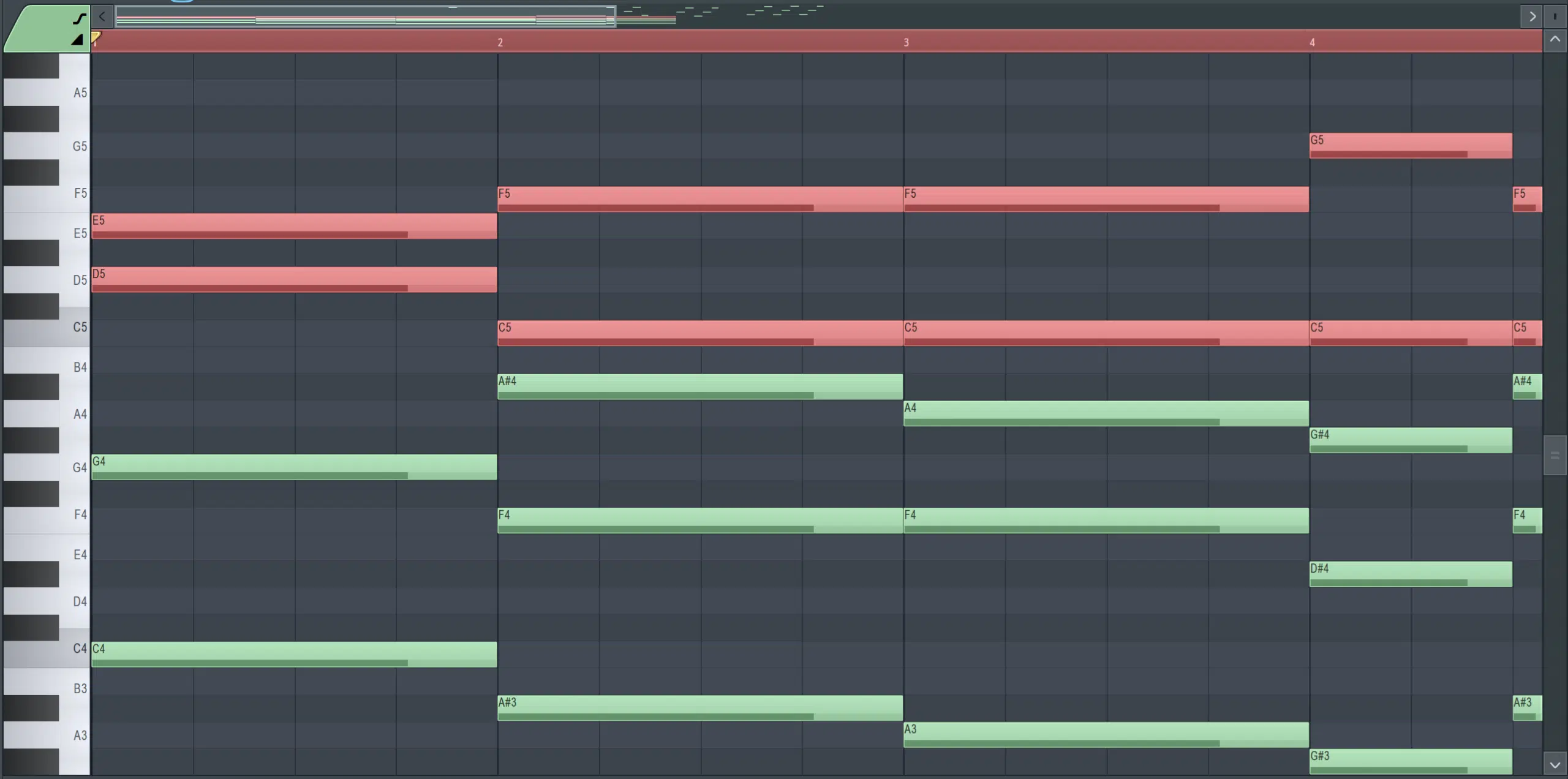
Extended chords, which include 7th, 9th, 11th, and 13th chords, are a staple in R&B music.
These extended chords add layers of complexity, depth, and richness to the music 一 creating the lush, soulful sound R&B is renowned for.
The use of extended chords goes beyond just adding notes…
They introduce subtle tensions and resolutions within the chords, making the progressions more emotionally charged.
A simple triad might sound clear and straightforward, but when transformed into a 9th or 11th chord, it gains a whole new dimension of feeling.
For instance, the Cmaj7 chord (an extended version of the C major triad) has a dreamy, ethereal quality that can’t be achieved with the basic C major chord.
This depth and complexity allow for more expressive, emotionally rich progressions that tug at the heartstrings.
Furthermore, these chords can serve as transitional or passing chords, which smooth out progressions and add unexpected twists.
They can turn a simple, predictable chord progression into something fresh and intriguing.
-
The Magic of Chord Inversions in R&B
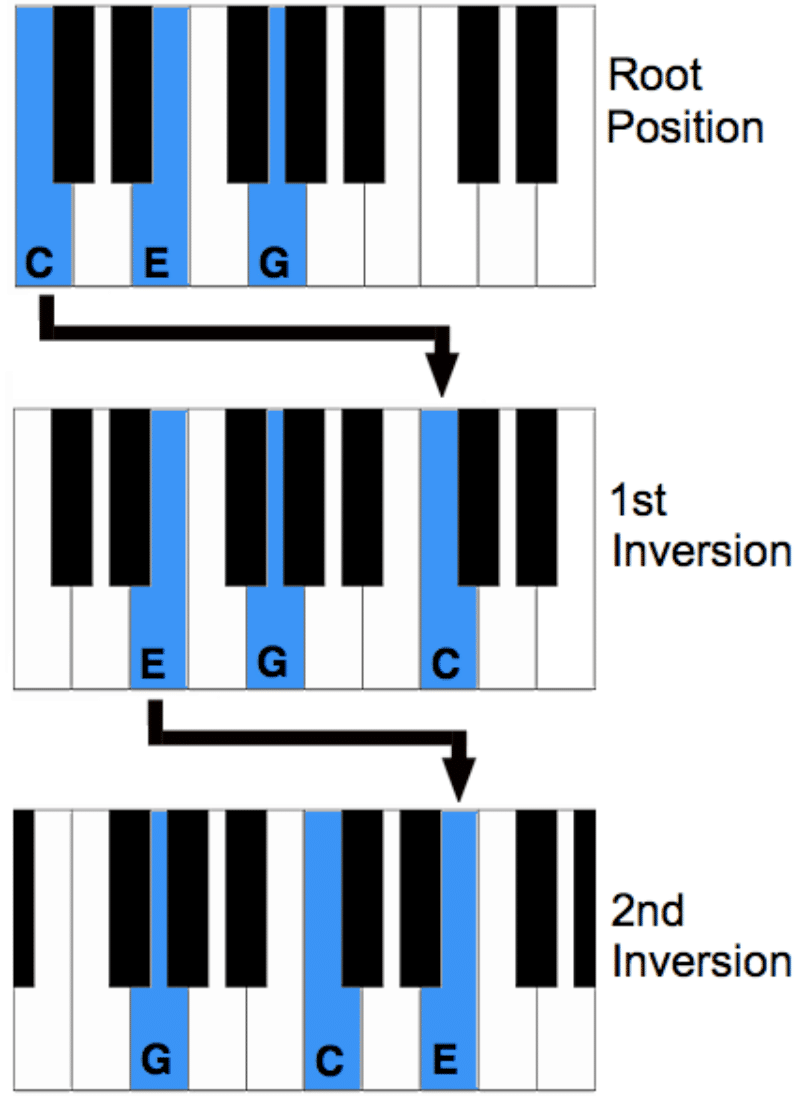
Chord inversions play a pivotal role in shaping the sound and flow of R&B chord progressions.
Instead of playing a chord in its root position, an inversion rearranges the chord’s notes, placing a different note as the bass.
These inversions can serve several purposes.
Firstly, they can create smoother transitions between chords, making progressions flow more naturally.
For example, transitioning from a C major chord to an Am7 can be smoother when using the first inversion of the C major chord 一 placing E as the bass note.
Additionally, inversions can add a touch of surprise and freshness to a chord progression, breaking away from the predictable.
They can make a familiar progression sound entirely new and captivating.
Lastly, inversions can introduce subtle emotional nuances.
A chord played in its root position might sound stable and grounded, while its inversion might sound more restless or introspective.
Borrowed Chords & Modal Interchange for Unique Progressions
Diving into advanced music theory concepts, “Borrowed Chords” and “Modal Interchange” stand out as techniques that can inject uniqueness and richness into your R&B progressions.
These methods can provide a refreshing departure from the norm and make your tracks more memorable.
-
Borrowed Chords

Borrowed chords, or chords taken from a parallel scale, offer a way to introduce unexpected and delightful twists in a chord progression.
By incorporating chords from outside the song’s primary key, you can create unexpected tonal shifts that capture a listener’s attention.
This technique is often used in R&B to infuse moments of surprise and emotional depth.
-
Modal Interchange
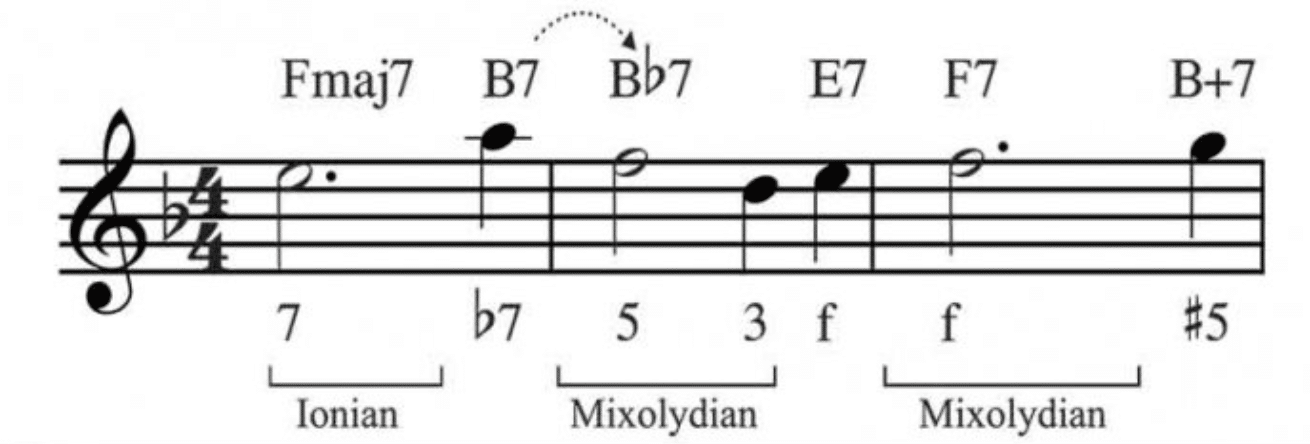
Modal interchange, closely related to borrowed chords, is the practice of switching chords from different modes or scales within a progression.
While in a major key, for instance, one might introduce a chord from its parallel minor 一 adding a fleeting moment of darkness or melancholy.
For example, in a progression based in C Major, introducing a Bb major chord (from C Mixolydian or C minor) can create a soulful, bluesy feel.
Such unexpected shifts can evoke powerful emotions, taking the listener on an unpredictable journey.
These techniques enrich the harmonic landscape of a song.
Instead of sticking to the conventional chords within a key, borrowed chords and modal interchange offer a broader palette of colors to paint with.
The Top 10 R&B Chord Progressions To Make Your Tracks Shine
Within the soulful realms of R&B, chord progressions are the backbone, breathing life and emotion into each track.
Here are the top 10 r&b chord progressions that have left a permanent mark on the genre, and can help you find your key signature sound, whether you’re a guitar player or producer.
Whether it starts with the ii chord, iii chord, v chord, c major chord or I chord, we’re breaking them all down.
#1. The Classic ii-V-I (Dm7 – G7 – Cmaj7)
The ii-V-I chord progression, originating from jazz, has found a rich home in R&B, and is a great starting point if you’re new to creating a chord progression.
Dm7 sets the stage with its gentle melancholy and produces a super reflective mood.
It’s a chord progression that beckons the listener into a world of introspection, perhaps hinting at memories of past love.
The G7 introduces an element of suspense.
This dominant chord adds tension, a musical twist, urging the narrative forward 一 waiting for a resolution, echoing longing and anticipation.
The resolution arrives in the form of Cmaj7, a serene and comforting chord.
It’s the musical equivalent of finding solace, wrapping up the emotional journey initiated by the preceding chords.
#2. The 6-2-5-1 Progression (Am7 – Dm7 – G7 – Cmaj7)
The 6-2-5-1 chord progression starts with Am7, a chord steeped in yearning.
It creates an ambiance of romantic introspection, perfect for recounting lost loves or reminiscing about better times.
Dm7 deepens the narrative, which adds layers to the story.
It’s the turning point, introducing complexity and depth (like an unexpected plot twist in a riveting novel).
G7, the dominant, acts as the climax 一 a culmination of the building emotions, hinting at a forthcoming resolution.
It’s a chord full of promise and hope.
The journey culminates with Cmaj7 and paints a picture of peace, acceptance, and resolution.
It’s a reminder that every story, no matter how tumultuous, can find its comforting end.
#3. Descending Progression (Emaj7 – D#m7 – G#m7 – F#m7)
Beginning with Emaj7, there’s an overwhelming sense of majesty and elevation with this chord progression.
It feels like the initial stages of an unforgettable love affair, where everything feels grand and prosperous.
Emaj7 is clarity in musical form, representing moments of pure realization and acknowledgment.
As the progression descends to D#m7, it introduces a touch of introspection and sobriety.
This chord feels like a:
- Slight hesitation
- Second thought
- Maybe even the first hints of complications in our unfolding story
G#m7 amplifies the emotional depth.
It’s a dive deeper into the complexities of relationships and emotions.
Wrapping up with F#m7, there’s a soothing, comforting touch.
It’s like finding solace in acceptance, understanding, or mutual comfort between two souls.
#4. Ascending Minor 7th Sequence (Dm7 – Em7 – Fm7 – Gm7)
The Ascending Minor 7th Sequence chord progression is a common progression in r&b.
Dm7 sets a contemplative mood, evoking feelings of deep reflection, like when you’re lost in thought and nothing else matters.
With Em7, there’s a subtle shift or gradual elevation 一 like hope is on the horizon or a change is imminent.
Em7 can also resemble a reassuring pat, a comfort that there’s more to explore.
The story progresses to Fm7, which introduces a delightful mix of optimism and uncertainty.
It’s the dawn of a new day, but with clouds hinting at an upcoming storm.
Gm7 concludes the ascent, bringing about a realization or acceptance of the journey’s challenges.
It essentially highlights the importance of growth through experiences.
#5. The Neo-Soul IV (Fmaj7 – E7#9 – Am9 – Gm7 – C7)
Neo-Soul, as a subgenre, has a unique and unmistakable sound that has beautifully integrated itself into the larger world of R&B, and should definitely be added to your musical vocabulary.
It infuses an essence of:
The Neo-Soul IV chord progression epitomizes this richness.
Starting with the Fmaj7, there’s a sense of beginning a story or introducing a sentiment.
The E7#9 chord is often referred to as the “Hendrix chord” due to its prominence in the rock legend’s music.
But within the context of Neo-Soul and R&B, this chord introduces tension, a bit of sonic intrigue.
Following up with Am9 and Gm7, the progression smoothly transitions 一 giving a soulful journey between moods.
Finally, the C7 chord acts as a sort of resolution, but with a dominant twist that keeps the progression from feeling too settled.
Additionally, the voicings often utilized in Neo-Soul music incorporate extensions beyond the 7th, resulting in chords like the:
- 9th
- 11th
- 13th
This expanded harmonic language creates a deeper emotional resonance which makes the music sound lush, expansive, and more expressive.
#6. Suspended Resolution (Dm7 – Dsus2 – G7 – Cmaj9)
The suspended resolution chord progression is one of my favorites.
Dm7 sets a tone of gentle melancholy, giving an initial somber touch which feels like happy memories or lost love.
As the progression moves to Dsus2, there’s a slight lift 一 like a breath caught between words, a pause in a conversation, or the anticipation of the words yet to come.
It adds a delicate suspense to the narrative.
G7 enters the scene with assertiveness and breaks the prior calmness with its dominant tonality.
It feels like a realization or an epiphany, similar to seeing things in a new light.
Concluding with Cmaj9, there’s a sense of homecoming and resolution, as if all the prior emotional dynamics find their resting place (signaling peace and contentment).
#7. Modern R&B 1-5-6-4 Progression (Cmaj7 – Gmaj7 – Am7 – Fmaj7)
Starting with Cmaj7, there’s a sincere and pure emotion with the modern r&b 1-5-6-4 chord progression.
The beginning is wholesome, a portrait of genuine feelings and simplicity.
Gmaj7 amplifies the positive aura.
It’s the joyous moments, the hearty laughter, and the carefree dances that this chord brings to the mind.
Transitioning into Am7 introduces a slight contrast.
It feels introspective 一 highlighting the bittersweet nuances of love and life.
The progression culminates with Fmaj7.
It encapsulates the varied emotions and ties them into a beautiful tale of love, loss, and everything in between.
#8. Diminished Passing Chord (Cmaj7 – C#dim7 – Dm7 – G7)
Cmaj7 is like the beginning of a sunny day.
Its major tonality reflects a positive outlook, symbolizing optimism and brightness.
The narrative takes a super intriguing twist with C#dim7.
This chord, with its diminished character, introduces a hint of mystery, unease, and psytrance; almost like a twist in a tale.
Dm7 follows, bringing the story back to a more familiar territory.
It feels calm yet colored with a shade of introspection.
Wrapping up with G7, there’s a sense of anticipation, a build-up for what’s next 一 emphasizing the cyclical nature of emotions and experiences.
In essence, this specific chord progression is very intriguing and captivating.
#9. Alternate Minor Progression (Am9 – Bm7b5 – E7#9 – Am9)
Am9 provides a deeply soulful start.
It evokes a myriad of emotions, from sneaky and introspection to love and yearning.
As we move to Bm7b5, there’s a certain unrest.
This chord serves as a reflection of complexities, capturing the perplexing moments of life and love.
E7#9 introduces a tinge of drama, evoking:
- Passion
- Intensity
- Bit of unpredictability
It symbolizes the highs and lows of relationships.
Returning to Am9, the chord progression feels complete 一 drawing a full circle (no, not like the circle of fifths), hinting at the cyclic nature of feelings and experiences.
#10. Phrygian Modal Flavor (E – Fmaj7 – Em7 – Dm7)
The Phrygian modal flavor chord progression begins with the chord E in its major form, which gives it an authoritative start.
It’s bold and unapologetic, commanding attention right from the jump, making this chord progression especially alluring.
Transitioning into Fmaj7, there’s a swift alteration.
This chord feels like a sign of hope after a foolish moment.
Em7 deepens the mood, creating an ambience filled with sentiments and deep reflections (like a quiet moment after a storm).
Dm7 serves as the calming endnote, wrapping up the vi chord sequence with feelings of resolution and peace; perhaps hinting at new beginnings.
Advanced Techniques & Tips For Intriguing Chord Progressions
Venturing into creative chord progressions require a fusion of traditional musical knowledge with modern innovation.
The combination of different music theories and technology provides a plethora of options.
Let’s explore these in depth…
-
Slash Chords
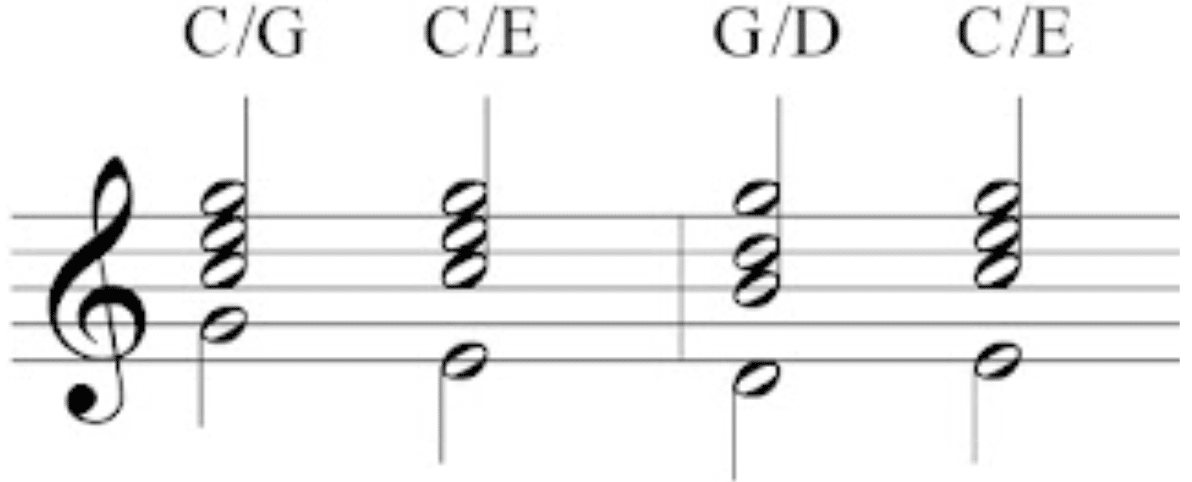
Slash chords are invaluable tools for you; the modern producer.
Mastering this technique can elevate your compositions 一 bringing depth and a touch of sophistication to your chord progressions.
Slash chords bring a distinct flavor to hip-hop, trap, and lo-fi beats.
They consist of a regular chord, but with a specified different bass note.
This ‘inversion’ can add richer harmonies and give a completely different feel to a progression.
For instance, while D/F# may contain the same notes as a D major chord, the prominence of the F# bass gives it a different color.
If you ever joined an online guitar community than you’ll find they always use slash chords.
-
Mixing R&B with Hip-hop and Jazz Music
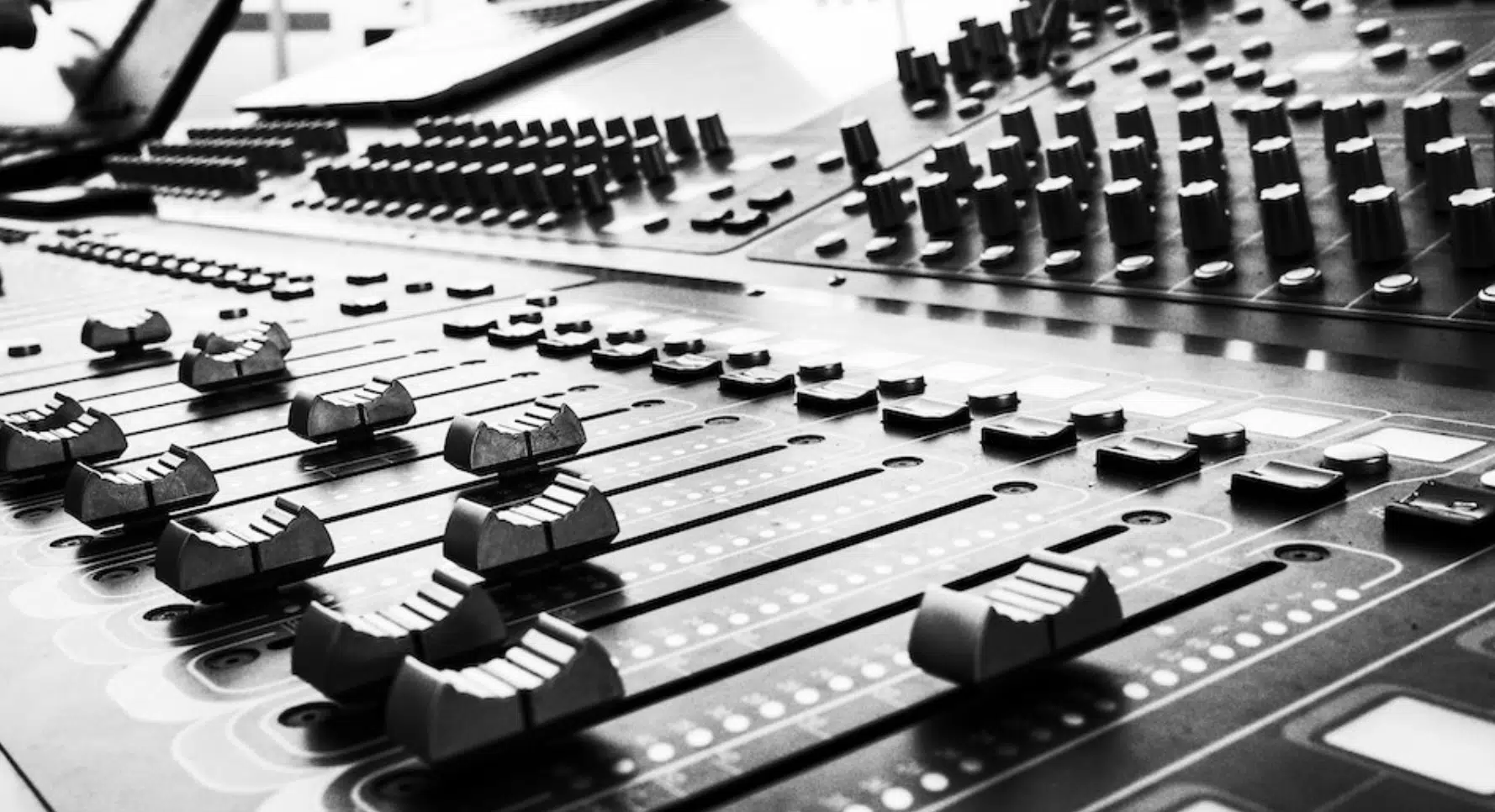
The cross-pollination of R&B, hip-hop, and jazz (and sometimes blues music) has led to some of the most iconic tracks in modern music history.
R&B brings its soulful melodies and emotional depth.
When merged with the rhythmic patterns and lyrical essence of hip-hop, it’s a match made in heaven.
The foundational beats of hip-hop coupled with R&B’s emotive chords can produce songs that stay on peoples’ minds.
Jazz then takes this fusion to another level.
The improvisational nature of jazz, its intricate harmonies, and unique scales can be sampled or emulated in beats to create a sophisticated soundscape.
Hip-hop producers often tap into the vast library of:
- Jazz classics
- Sampling iconic moments
- Just drawing inspiration from their complex chord structures
These three genres, when blended correctly, can produce a sound that is both nostalgic and fresh.
It speaks to the soul, makes you think, and gets your feet tapping.
-
Bass Note Fundamentals & Their Role in R&B Chord Progressions

In the world of hip-hop and R&B, the bassline is much more than just a backdrop; it’s the heartbeat of a song.
Bass notes shape the track’s overall sound, laying the foundation over which other instruments dance.
They determine the groove; guiding listeners through the song’s emotional and rhythmic journey.
R&B chord progressions often rely on the bassline to provide depth and movement.
The bass can:
- Play a simple root note 一 Reinforcing the chord’s foundation.
- Play around the chord 一 Introducing melodic elements and creating counterpoints.
The role of the bass in these progressions is to ensure a seamless transition between chords, maintaining the flow and feel of the track.
Understanding and mastering bass note fundamentals allow you to craft dynamic and engaging tracks.
By recognizing which bass notes resonate with specific chord progressions, one can significantly enhance the emotional and rhythmic depth of a song.
Bonus: Unconventional Chord Practices
In the realm of R&B, while traditional chord progressions remain foundational, pushing the boundaries by experimenting with unconventional chords and music theory can bring a distinct flavor to your compositions.
-
Diminished Chords
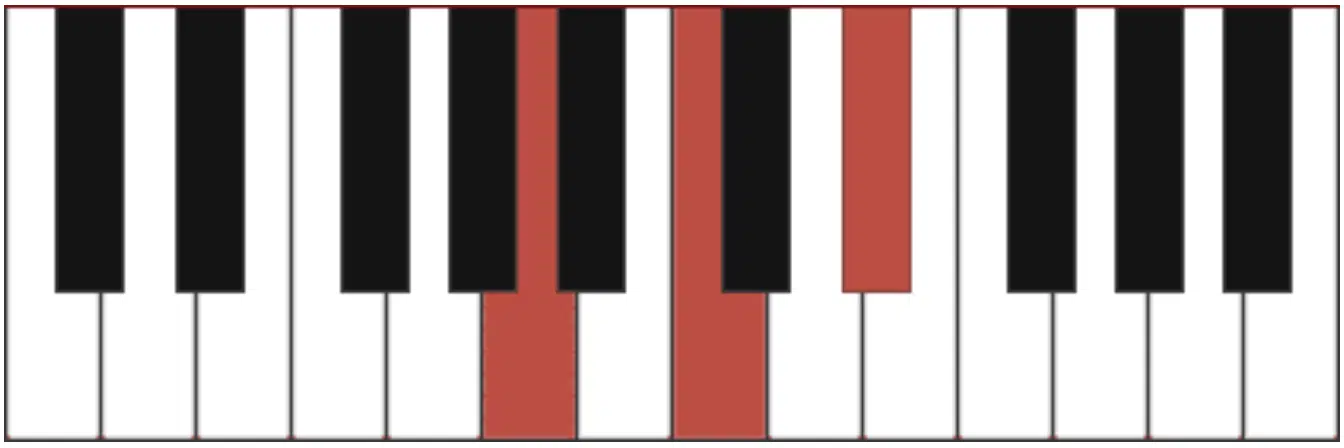
Diminished chords bring tension and drama, creating an almost haunting allure to a progression.
They are built by stacking minor thirds and have a dissonant quality.
Which, when finally resolved, offers listeners a super delightful sense of release.
For example, a transition from a “vi chord” or “i chord” to a “bvii chord” can be gracefully bridged using a diminished chord 一 offering an unexpected but pleasing twist to the ears.
If you’d like to learn everything about diminished chords, we’ve got you covered.
-
The Use of The bVii Chord
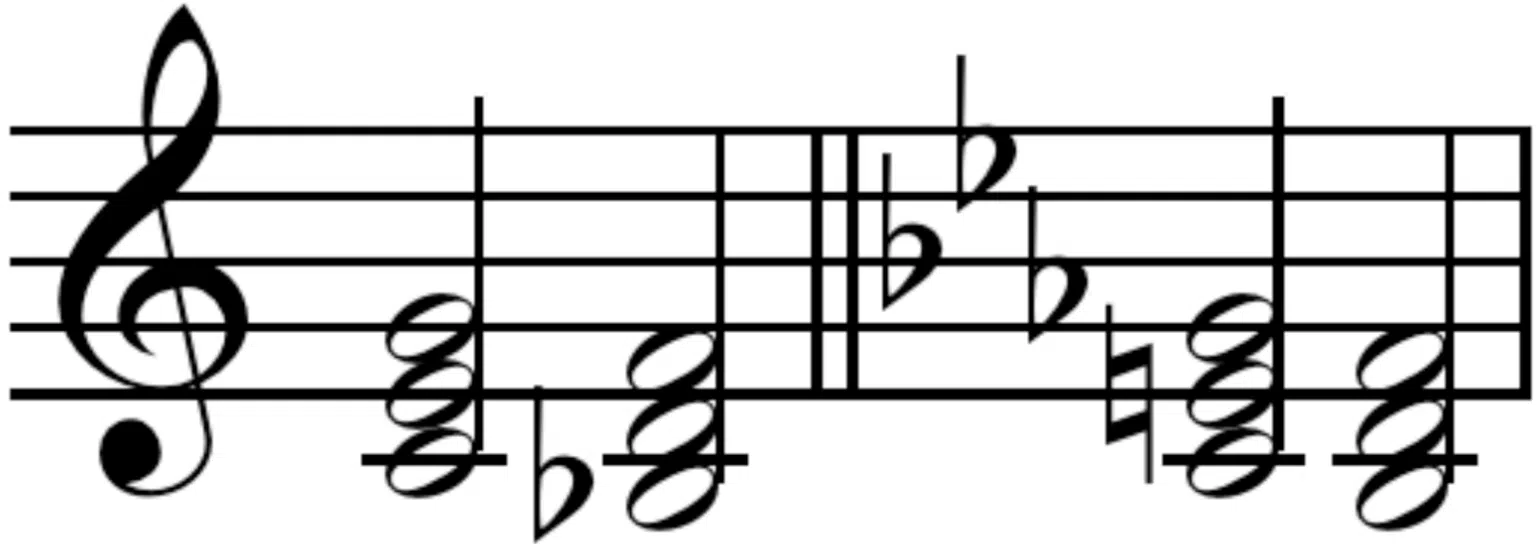
While not the most common in R&B, the “bVii chord” can inject an exotic flair into your chord progression.
Imagine starting with an “F major chord” and then venturing into the territory of “bVii.”
It can offer a surprising turn, making your listeners sit up and take notice.
The bVii, being a borrowed chord (not extended chord) from the parallel minor, brings a touch of the unexpected.
Yet it feels oddly familiar, which creates a sense of intrigue.
-
Experiment With Non-Diatonic Chords

Non-diatonic chords are those that don’t naturally belong in the key.
This can introduce a jarring, yet intriguing element into the unique music you’re creating and promoting.
-
Modulation
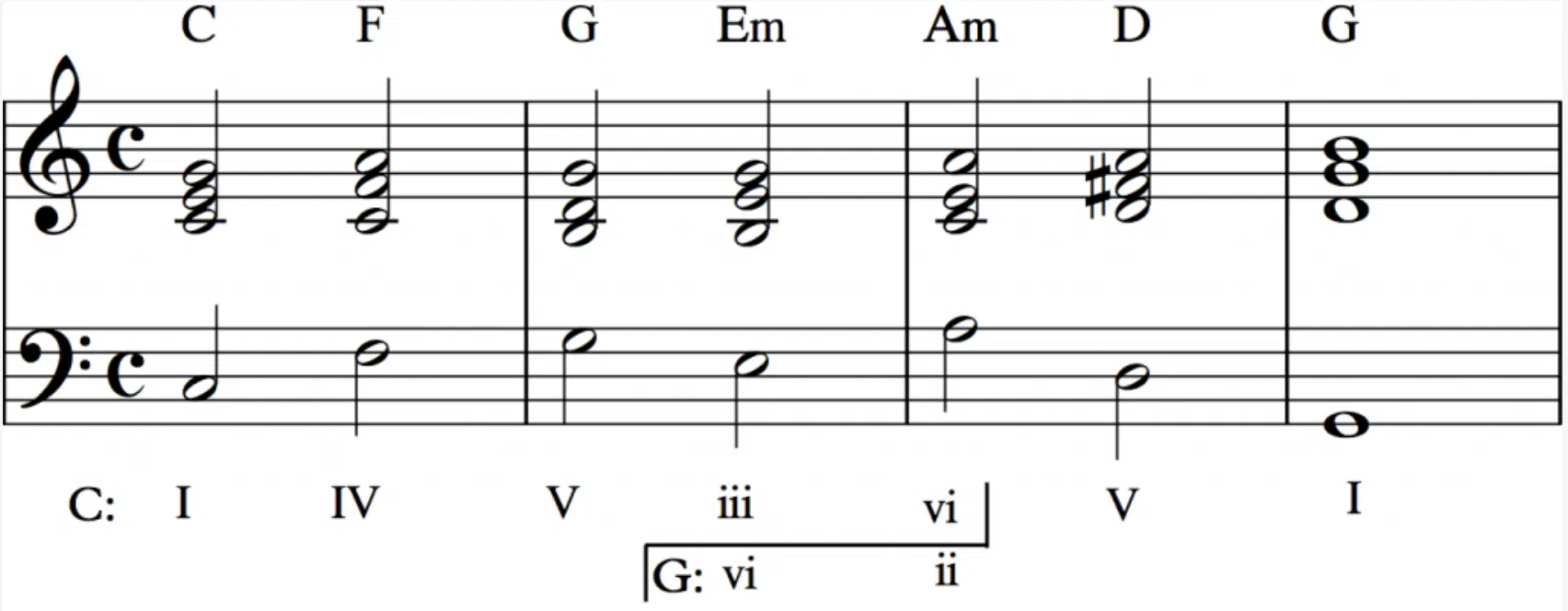
Modulation, shifting from one key to another, adds layers of complexity and keeps the listener engaged.
It serves as a powerful tool in a songwriter’s arsenal 一 allowing for a seamless transition from one emotional landscape to another.
By introducing a new key (even briefly) you can invoke a heightened sense of:
- Tension
- Anticipation
- Release
This shift can reinvigorate a piece, especially in longer compositions, by providing fresh harmonic context and breaking any monotony.
Skilled use of modulation can turn an ordinary song into a full-blown journey.
It keeps the listener on their toes as they travel through varying moods and sonic textures.
-
Chord Voicings & Extensions

Chord voicings and extensions, where notes of a chord progression are rearranged or added, can transform a common chord into something entirely new.
Such practices, while unconventional, can be the very thing that sets a track apart and excels its appeal.
They provide it with an identity and flavor that’s truly one-of-a-kind.
-
Using the Eb Major Scale & D Minor Scale in Progressions
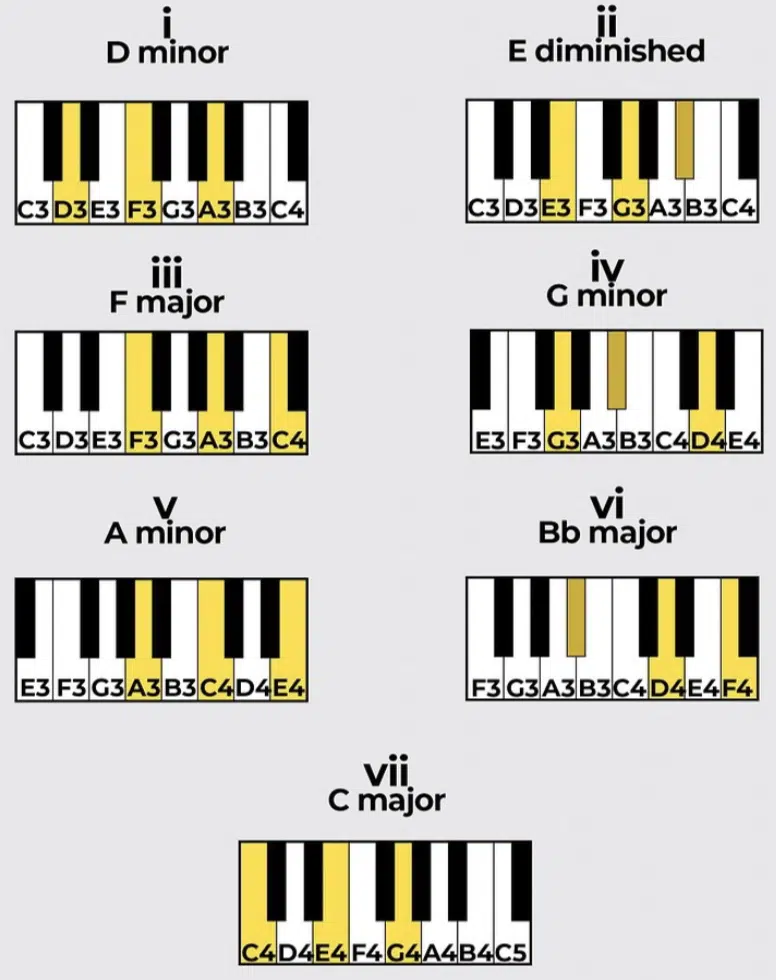
The Eb major scale, consisting of the notes Eb-F-G-Ab-Bb-C-D, brings with it a certain richness.
When used in R&B chord progressions, chords formed from this scale (like Ebmaj7 or Bbmin7) can produce a smooth, buttery sound that’s distinctly soulful.
On the other hand, the D minor scale, with its notes D-E-F-G-A-Bb-C, offers a touch of gloom.
Dm7, Gm7, or A7b9 are some chords derived from this scale that can be found in soulful ballads or more contemplative R&B tracks.
When used effectively, this scale can evoke a deep sense of nostalgia or longing.
R&B Chord Progressions: Final Thoughts
The captivating essence of R&B lies deeply within its chord structures, harmonies, and the emotions they evoke.
As you start creating your own tracks, remember that understanding these chord progressions is essential.
From classics to the unconventional, each progression has the potential to play over and over again in your listener’s minds.
It pulls them into the narrative you craft with your music.
If you’re looking to step up your game and seek inspiration from the absolute best chord progressions in the game, then the Free Essential Famous MIDI Chord Progressions pack is an invaluable resource.
It contains 24 unique MIDI progressions inspired by songs from chart-toppers like Ariana Grande and the Weeknd.
Utilizing this pack not only introduces you to world-class chord combinations but also provides a foundation for discovering your unique musical voice.
It allows you to deepen your analytical ear and produce versatile chord structures beyond just R&B.
Which can indeed enhance your compositions across multiple genres.
With these tools and knowledge at your disposal, the world of R&B awaits your next sonic masterpiece!
Until next time…






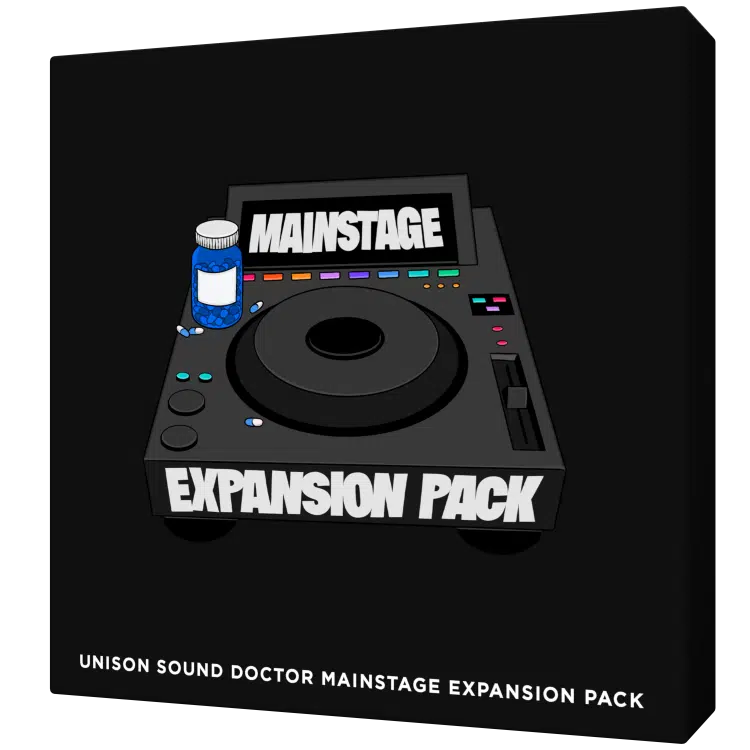
 40 Chord
Progressions
40 Chord
Progressions

Leave a Reply
You must belogged in to post a comment.